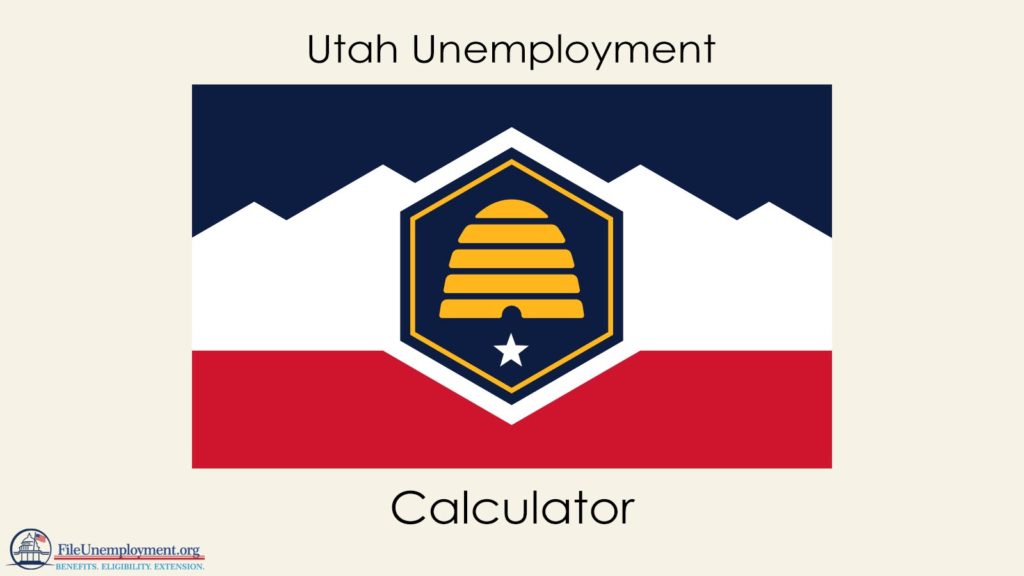
Utah Unemployment Benefits Calculator
Utahns who apply for unemployment benefits can use the Utah Unemployment Calculator to estimate out their weekly UI compensation.
Please note that this tool only provides an estimate and is not a guarantee of benefits.
Utah Unemployment Calculator
Jobless workers can use the Utah unemployment calculator to estimate how much money they will receive if they qualify for Utah unemployment benefits.
Please note that this calculator is only an approximation—it is not a guarantee of benefit eligibility.
How are Utah unemployment benefits calculated?
To qualify for benefits, you must have earned a minimum of $4,800 during your “base period.” The total wage during this base period must be equivalent to 1.5 times the highest amount of wages received by the worker during any calendar quarter of the same base period.
If the earnings of an employee do not meet the 1.5 times requirement, an alternative base period may be utilized to determine eligibility for benefits. In Utah, the alternate base period is the four most recently worked calendar quarters.
Weekly unemployment insurance benefits are calculated by dividing the earnings from the highest quarter of your base period by 26, and then subtracting $5.00. The maximum weekly benefit amount (WBA) is $712, and the total maximum benefit amount (MBA) for the year is $18,512.
Utah uses an earnings chart to calculate your payments.
For example, if your highest wages during a quarter of your base period is $13,286, your weekly benefit amount is $505.
If your highest wages were $18,330, your WBA would be $700.
To calculate weekly benefit amounts that are less than $491, divide your highest quarter by 26 and subtract $5.00
How many weeks do I get Utah unemployment benefits?
To determine the number of weeks for which you are eligible to receive benefits, multiply your total insured wages paid during the base period by 27%, disregarding any fraction of $1. Then, divide the result by your weekly benefit amount, disregarding any fraction as well.
The minimum number of weeks for regular benefits is 10, while the maximum is 26 weeks.
Are Extended Benefits available?
As of 2023, the state of Utah does not currently offer extended benefits. Extended Benefits are typically only offered when the state unemployment rate hits a certain threshold, or during natural disaster/economic uncertainty—such as a pandemic.
What is a base period?
The base period plays a crucial role in calculating both your weekly unemployment insurance benefit amount and the duration of your benefit payments.
To determine your base period, you should look at the first four calendar quarters of the last five that were completed before the week in which you file your application for benefits. Each calendar quarter is a three-month period that ends on March 31, June 30, September 30, and December 31.
Can I work part time and receive benefits?
Yes. You may apply for benefits if you work part time or are experiencing partial unemployment, so long as your earnings are lower than your weekly benefit amount.
How do I get paid?
Unemployment compensation is paid electronically. Direct deposit to your personal checking or savings account is the preferred method of payment. You can make changes to your bank information or opt for this option at any time by visiting jobs.utah.gov or obtaining the necessary form by calling the Claims Center.
It is important to note that the Utah Department of Workforce Services cannot deposit funds onto prepaid debit cards. Instead, if you do not choose direct deposit, a U.S. Bank Reliacard account will be established for you.
If you opt for the U.S. Bank Reliacard, your benefit payments will be deposited into a separate account created by the card issuer, and you can withdraw cash or make purchases with the card. No bank account or credit check is necessary.
It is crucial to keep your U.S. Bank Reliacard in a safe place. You can continue to use it any time you file for UI benefits before it expires. If you need to request a new card, a replacement fee may apply.
What can affect my weekly payment amount?
Child support deductions
If you have signed an agreement, or if a court has ordered payment to the Utah State Office of Recovery Services for child support payments, your weekly benefit amount may be reduced by up to 50 percent.
The Utah State Office of Recovery Services has the authority to control the amount of child support withheld from your unemployment benefits. If you have questions regarding the amount being deducted, please contact the Office of Recovery Services at (801) 536-8500.
Retirement deductions
Your weekly benefit amount may be reduced by retirement income, including disability retirement.
If you receive or apply for any type of retirement or disability benefits income, it is mandatory to immediately report this information to the Claims Center. Once you have reported this information, you will receive a notice if the income will be deducted from your benefits.
Failure to report retirement or disability retirement income or changes in that income may result in a denial of benefits and potential overpayment.
If you obtain retroactive retirement income that covers the period you received unemployment benefits, you are responsible for any overpayment. You will be required to reimburse Workforce Services for the amount of ineligible benefits you received during that period of retirement.
Do I have to pay taxes on unemployment benefits?
Yes, unemployment insurance benefits are subject to income tax. You can opt to have a tax rate of 10% withheld from your weekly benefit amount to cover federal taxes, and 5% for state taxes. Any taxes that are withheld will be transmitted and reported to both the Internal Revenue Service (IRS) and the State Tax Commission.
At the beginning of each year, the Utah Department of Workforce Services will send you a notice (Form 1099-G) detailing the benefits paid and the tax amounts withheld for the previous year. This will need to be filed with your annual tax return.




